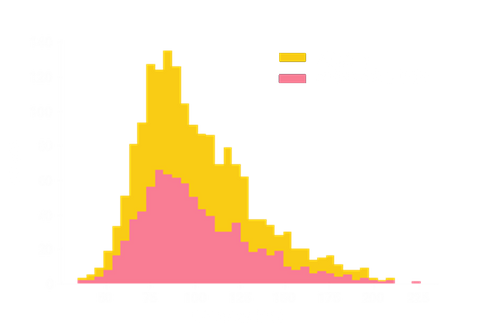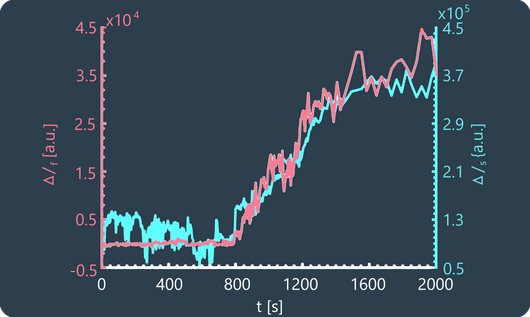Nanolyze adds essential information to make drug development faster and more efficient by providing researchers with unique information on nanoparticle processes.

Nanomedicine is an emerging field with the power to cure untreatable diseases

>98% of the precious active content do not hit target

To improve delivery rate, researchers need to understand the entire delivery process
Ligand-receptor interaction is fundamental to the understanding of virus infection, nanoparticle drug delivery and cellular targeting. Nanolyze’s innovative scattering technology enables users to create membrane mimics on chip surface and comprehensively investigate nanoparticle interaction dynamics. The particles can be imaged label-free, making fast image acquisition over a long-time intervals possible.
Nanolyze allows you to single particle level analysis of for example:

Label-free imaging of nanoparticle binding on the surface. Nanoparticles were introduced into the fluidic cell, and they were allowed to interact and bind to the surface. The particles are detected in each frame and the evolution of particle density on the surface is plotted. A typical signature consisting of a lag phase, an exponential phase and a steady-state phase is seen in the particle binding curve.
Size is one of the fundamental properties that define the behaviour of nanoparticles. Besides size, mRNA cargo loading heterogeneity of lipid nanoparticles is a key quality indicator that determines the effectiveness of LNP based therapy. An accurate, high-resolution estimation of size and cargo loading of nanoparticle can help you advance your nano drug-discovery process. Moreover, single-particle resolution helps you to discover hidden sub-populations not revealed by ensemble methods, offering a deeper insight into your sample not possible with many state-of-the-art methods.
Nanolyze enables you to obtain size distribution and cargo loading data simultaneously, obviating the need for relying on multiple instruments. This makes your experimental workflow simpler, harmonious and allows you to use your time more productively.

Combining size and loading capacity information supprts effiecient development of optimal nano-carriers
Nanoparticles undergo structural or size changes in in many biological and physical processes.
Structural changes in particles result in corresponding changes in the scattering signal. By monitoring the evolution of scattering signal over time, particle-particle interaction or size changes can be detected and quantified.
Nanolyze enables label free investigation of:
a. Liposome-liposome fusion
b. Single-virus infection
c. Nanoparticle aggregation
d. Protein-lipid interactions

Scattering signal reveals LNPs collapsing on a membrane while fluorescence signal is not affected. Data from a study published in PNAS pushing the boundaries in research on Parkinson's

Scattering and fluorescence signal increase for a single POPC vesicle upon binding the fluorescently labelled cholera-toxin B (CTB) protein complex subunit. The lognormal distribution gives a modal value of 2.6, a number which under reasonable assumptions can be translated to a CTB protein corona thickness of around 3 nm.
Follow our journey and interact with us on LinkedIn
Copyright © All rights reserved